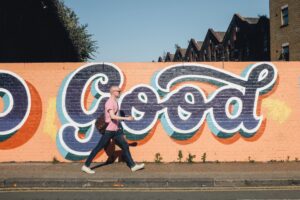Everybody knows that every snowflake is one of a kind. Unique. Just like a fingerprint. Wait, how do we know a fingerprint is unique?
In a legal proceeding in the United States, the process the court uses to determine whether an expert witness is qualified to give testimony in their field is commonly referred to as the Daubert test. If a court were going to let an expert witness in to testify whether a certain fingerprint found at the scene of a crime or on a critical piece of evidence was a match for a defendant…the court would use the Daubert test to determine whether the expert had knowledge derived from sound scientific methodology.
Except they don’t.
What do you mean, they don’t?
They don’t. No court has ever challenged the expert-ness of an expert witness who purported to be an expert on fingerprints.
Why not?
To be an expert in something, there has to be a body of knowledge for you to know about. Where is the body of knowledge about fingerprints? They swirl around, we know that much right? There’s a database of them, right?
The FBI does have a database of fingerprints. But they’ve never let researchers look at it.
The question researchers want to know the answer to is: how unique is a fingerprint? The lines of a fingerprint are about a millimeter wide. A fingertip might be a square inch. So there obviously can only be so many variations in a fingerprint. We know that fingerprints don’t come in stripes or plaid, so the universe of possible variations is limited. So just how limited? How can you compare the relative uniqueness of other markers, like a retna scan, DNA, voice patterns, etc. to a fingerprint when there isn’t any scholarship on how unique a fingerprint is?
This is really interesting because it subjects the validity of fingerprint evidence to a birthday attack. This is a basic type of security problem where you can calculate the probability of two people in the same room having the same birthday. Assuming that there are 30 people in a room, the likelihood that there is one person in the room with a specific birthday is only about 8%. 1-(364/365)30. The likelihood that two people in the room with the same birthday is nearly 70%. The two variables here are the number of people in the room and the number of possible days. If there are 10 million possible variations of fingerprint and 5,000 were at a conference on IT security, what is the likelihood of finding two with the same fingerprint? I’ll keep this idea around for my next detective novel.
A Daubert test would look at the following 5 factors to determine whether a fingerprint expert would be able to testify:
- Empirical testing: the theory or technique must be falsifiable, refutable, and testable.
- Subjected to peer review and publication.
- Known or potential error rate.
- The existence and maintenance of standards and controls concerning its operation.
- Degree to which the theory and technique is generally accepted by a relevant scientific community.
The list is nondispositive and nonexclusive. The 4th and 5th factors are the only ones that have bearing on a fingerprint. Would these two factors alone be enough for courts to let a fingerprint expert testify? Maybe, but we would have to see a Judge to make that decision.



